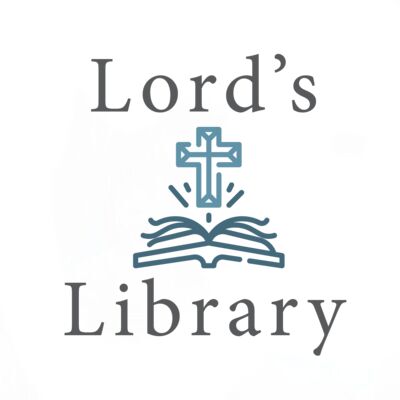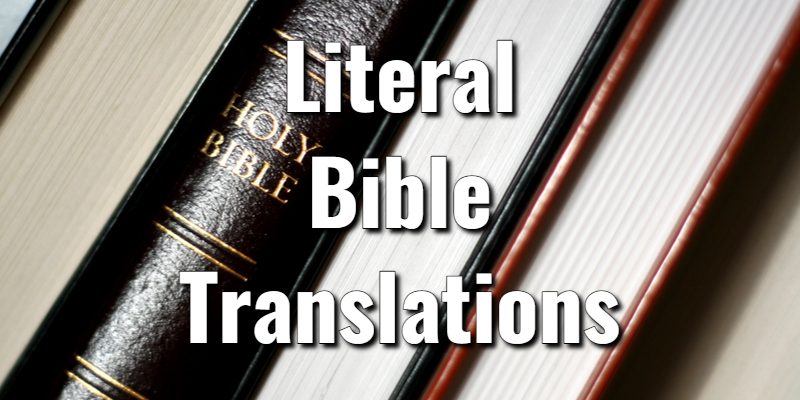Lord’s Library editors created this essential list of literal Bible translations and versions to know.
Literal Bible translations most closely follow the Hebrew, Aramaic, and Greek manuscripts that translators work off of. When doing a literal translation, the accuracy of the words is paramount. Keep in mind, the difference in the grammar between these ancient languages and our own is significant, so some question whether a 100 percent literal translation is possible. But, these Bible versions work to produce a translation that’s as close to that standard as possible.
Literal Bible translations are bested suited for those who value accuracy over readability. It’s for that reason that our editors like to suggest literal Bible translations of the as one’s primary version. The most popular word-for-word Bible translations are the New American Standard Bible (NASB), Amplified Bible (AMP), English Standard Version (ESV), King James Version (KJV), and New King James Version (NKJV).
While literal translations are the most accurate, one mustn’t assume that they don’t come with their own challenges. For instance, the Old Testament was written in Ancient Hebrew. That language, being very old, has relatively few words. In light of this, words have multiple meanings. That means that one must consider the meaning of the word in any given passage based on the context in which it is found.
The New Testament was written in Greek. Greek is known to have very different verb tenses and other unique grammatical intricacies not found in English. Because of things like this in both languages, literal translating is much more complicated than one may think!
The pros of a literal translation are:
- Highest level of accuracy to Biblical manuscripts
- Works well on straightforward, narrative, or legal texts in the Bible
- Strives to replicate both the words and form of the original Greek and Hebrew as much as possible
The cons of a literal translation are:
- Complete word-for-word accuracy is a noble goal, but is it possible? Given the changes in language, grammar, syntax, and culture over time, a 100 percent literal translation would be unintelligible
- Doesn’t work as well on poetic, symbolic, and prophetic Bible texts
Note: The literal Bible translations listed below are in no particular order.
Literal Bible Translations
New American Standard Bible (NASB)
The New American Standard Bible is an interesting Bible because it is the most widely embraced literal and accurate Bible translation created in the 20th century. First published in its entirety in 1971, the NASB aims to be true to the original languages of the Bible while being understandable. This Bible translation was produced from the need for a contemporary literal Bible translation that existed at that time.
The greatest quality of the NASB is its fidelity to the Hebrew, Aramaic, and Greek of which it came. It’s impressive how it is able to merge this accuracy with a readability that is accessible to most modern readers. Modern criticism cites that while it’s easy to read and mainly accurate to the best manuscripts available, it is devoid of the literary excellence and passion of the King James Version.
The Amplified Bible (AMP)

The goal in this paraphrase is to “amplify” the text of the Bible by using additional wording alongside a system of punctuation and other typographical features that bring out a clearer meaning to the Bible. Where Greek and Hebrew words have multiple words translated into English, it gives them all. The Amplified Bible also provides emphasis given to words with ranges in meaning. These features make it a unique choice of Bible. There was a later revision done in 2015.
English Standard Version (ESV)
Of the more modern, meaning-for-meaning translated Bibles, the English Standard Version most closely walks the line between literal, word-for-word translating and attempting to convey the meaning above all else. The first complete ESV Bible was published in 2001 by Crossway, as a revision of the Revised Standard Version. The team of over 100 evangelical scholars and pastors had a unique philosophy in translating this Bible: “Emphasizes word-for-word accuracy, literary excellence, and depth of meaning.”
The ESV remains a popular choice among evangelical churches. That’s because of its unique ability to walk that line between honoring the literal translations that preceded it (such as the RSV) while conveying meaning and modern language in an accessible way. This view is not shared by all though, as some believe that while pursuing this goal the translators have made a few grave errors in theology.
King James Version
The King James Version has stood the test of time and proven itself by becoming the best-selling English Bible translation of all time. This is because it boasts incredible accuracy to the manuscripts from which it was translated and a rich, vibrant language. The complete King James Bible was originally published in 1611 after being commissioned by King James VI.
The historical significance of this Bible translation is astounding, so much so that it has been credited with shaping much of the culture of the English-speaking world. Today, the King James Version still proves to be an effective and reliable translation, with its only caveat being that the language it’s written in is not friendly to the average reader.
New King James Version (NKJV)
First published in 1982, the New King James Version of the Bible is an update of the King James Version produced by Thomas Nelson. This Bible translation was created in an effort to bring the accuracy and reliability of the original King James to a wider, modern audience.
The New King James Version is an engaging Bible translation for those that appreciate the history, flow, and accuracy of the King James Version but wish to read a Bible in a more contemporary language. Criticism of this Bible states that it is not as faithful to the original King James as it claims to be.
Final Thoughts
Ultimately, the best translation for a specific individual is the one that will help them to personally grasp the truth of the Gospel. For many, it will be literal Bible translations. The word-for-word presentation of the text offers a peace of mind that can only come from knowing you have the Word of God in your hands.
Lord's Library participates in affiliate programs. We may make a small commission from products purchased through this resource.
- What Does the Bible Say About Achievements? With Key Scriptures - April 11, 2025
- What does the Bible Say About Abortion? With Key Scriptures - April 11, 2025
- Prosperity Gospel Meaning in the Scriptures: Is it Biblical? - April 7, 2025
















